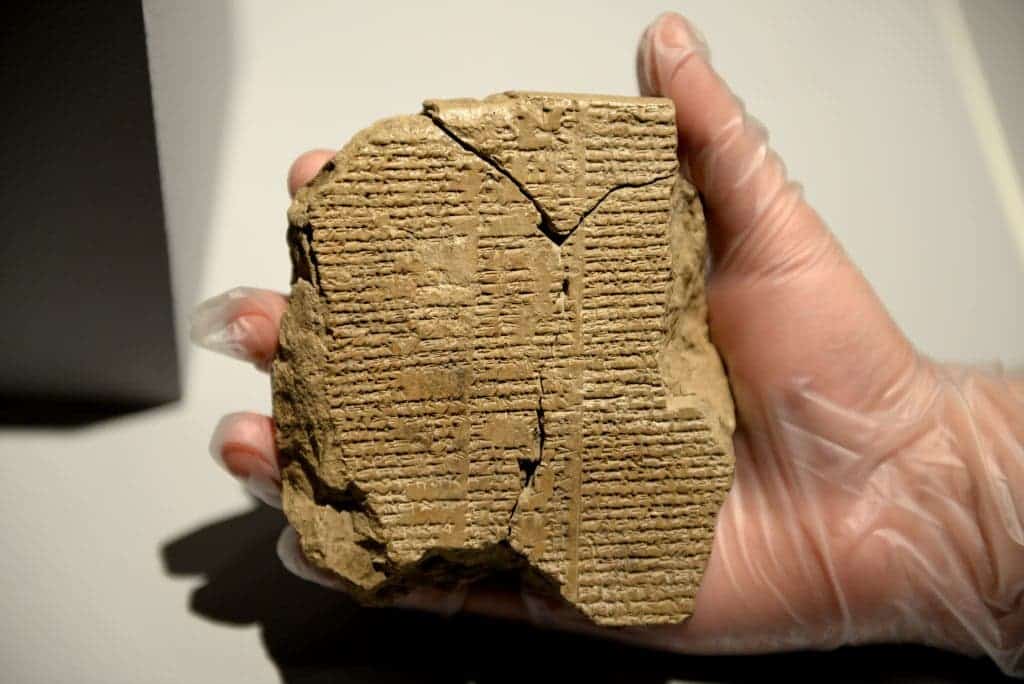The Sulaymaniyah Museum in Iraq uncovered 20 new lines of the Epic of Gilgamesh, the nearly 3000 years old Mesopotamian poem, considered to be one of the world’s first great works of literature. They belong to a passage in which Gilgamesh enters a cedar forest and slays a demigod named Humbaba, with the setting and the demigod himself described differently and in more detail, writes Ted Mills for Open Culture.

Image credits to Osama S.M. Amin.
The Epic of Gilgamesh dates back to the 18th century B.C. and tells the story of Gilgamesh, a Sumerian king who travels the world with a wild companion named Enkidu. The version we are most familiar with today is the one discovered in Nineveh in 1853, but being such an incredibly old piece of literature, archaeologists had to piece it together from disparate passages and scholars are well aware that new fragments of the poem could turn up.
During the chaos of the US-led invasion of Iraq, looters descended upon ancient sites and started smuggling an incredible amount of artifacts. So the Sulaymaniyah Museum, directed by the council of ministers of Iraqi Kurdistan, started an initiative: they would pay smugglers to ‘intercept’ archaeological artifacts on their journey to other countries. No questions were asked about who was selling the piece or where it came from. The Museum believed this condition kept smugglers from selling their merchandise to other buyers, as they would have otherwise done so ‘with ease and without any legal consequences.’
Among the artifacts that smugglers wanted to sell were a set of clay tablets that caught Professor Farouk Al-Rawi’s eye.
“The collection was composed of 80-90 tablets of different shapes, contents and sizes. All of the tablets were, to some degree, still covered with mud. Some were completely intact, while others were fragmented. The precise location of their excavation is unknown, but it is likely that they were illegally unearthed from, what is known today as, the southern part of the Babel (Babylon) or Governorate, Iraq (Mesopotamia),” according to Osama S.M. Amin at Ancient History Et Cetera.
The new lines were etched onto a tablet that broke into three fragments, dating some 3,000 years ago, during the Neo-Babylonian period.

Image credits to Osama S.M. Amin.
An analysis by the University of London’s Farouk Al-Rawi, professor at the School of Oriental and African Studies, reveals more details from the poem’s fifth chapter. They include descriptions of the journey into the “Cedar Forest,” where Gilgamesh and Enkidu encounter monkeys, birds, and insects, and finally battle with and slay Humbaba:
“The previously available text made it clear that [Gilgamesh] and Enkidu knew, even before they killed Humbaba, that what they were doing would anger the cosmic forces that governed the world, chiefly the god Enlil. Their reaction after the event is now tinged with a hint of guilty conscience, when Enkidu remarks ruefully that … ‘we have reduced the forest [to] a wasteland,’ ” Al-Rawi says.
The chapter completely repaints Humbaba, who had been depicted as a “barbarian ogre” in other tablets.
“Just like a good director’s cut, these extra scenes clear up some muddy character motivation, and add an environmental moral to the tale,” Mills concludes.






